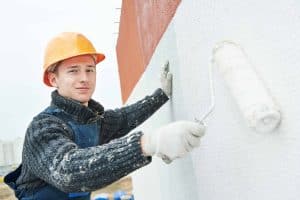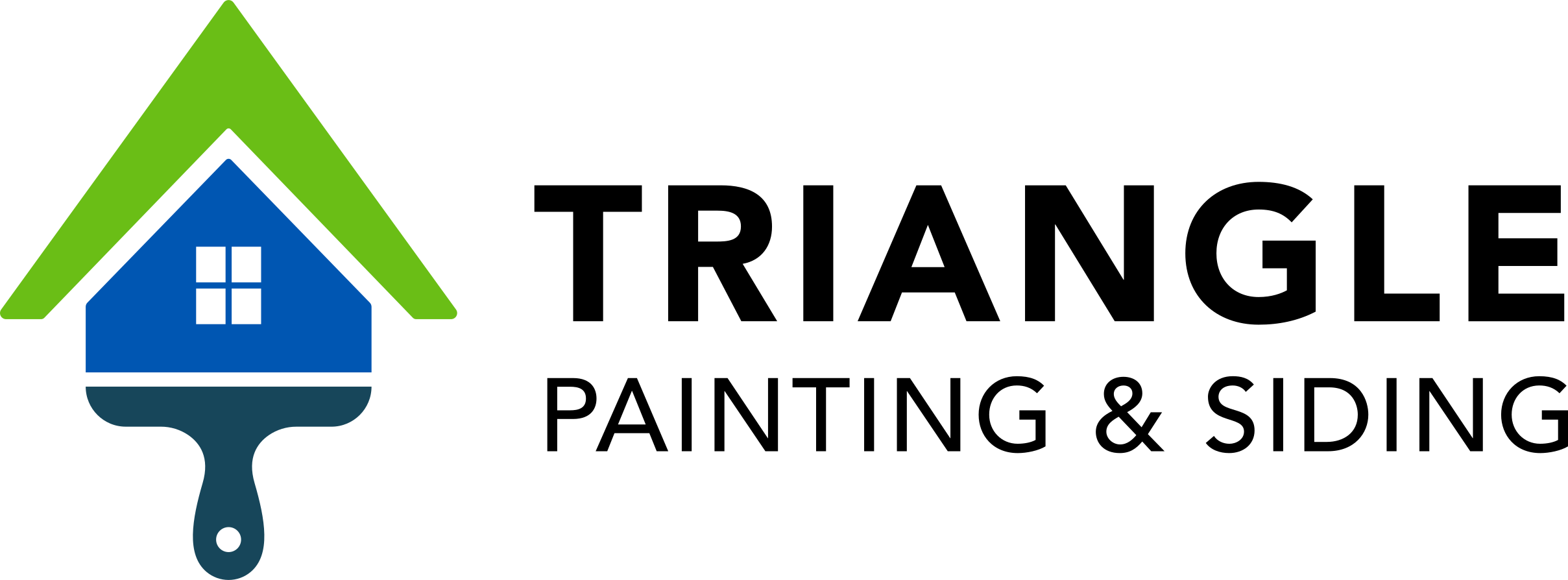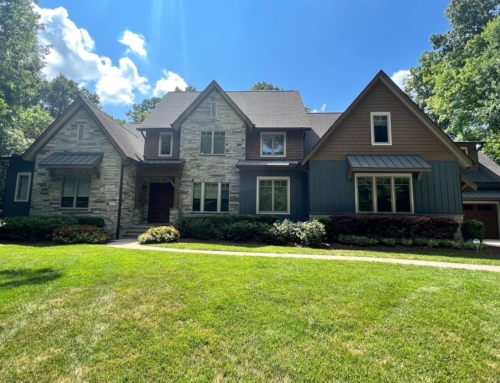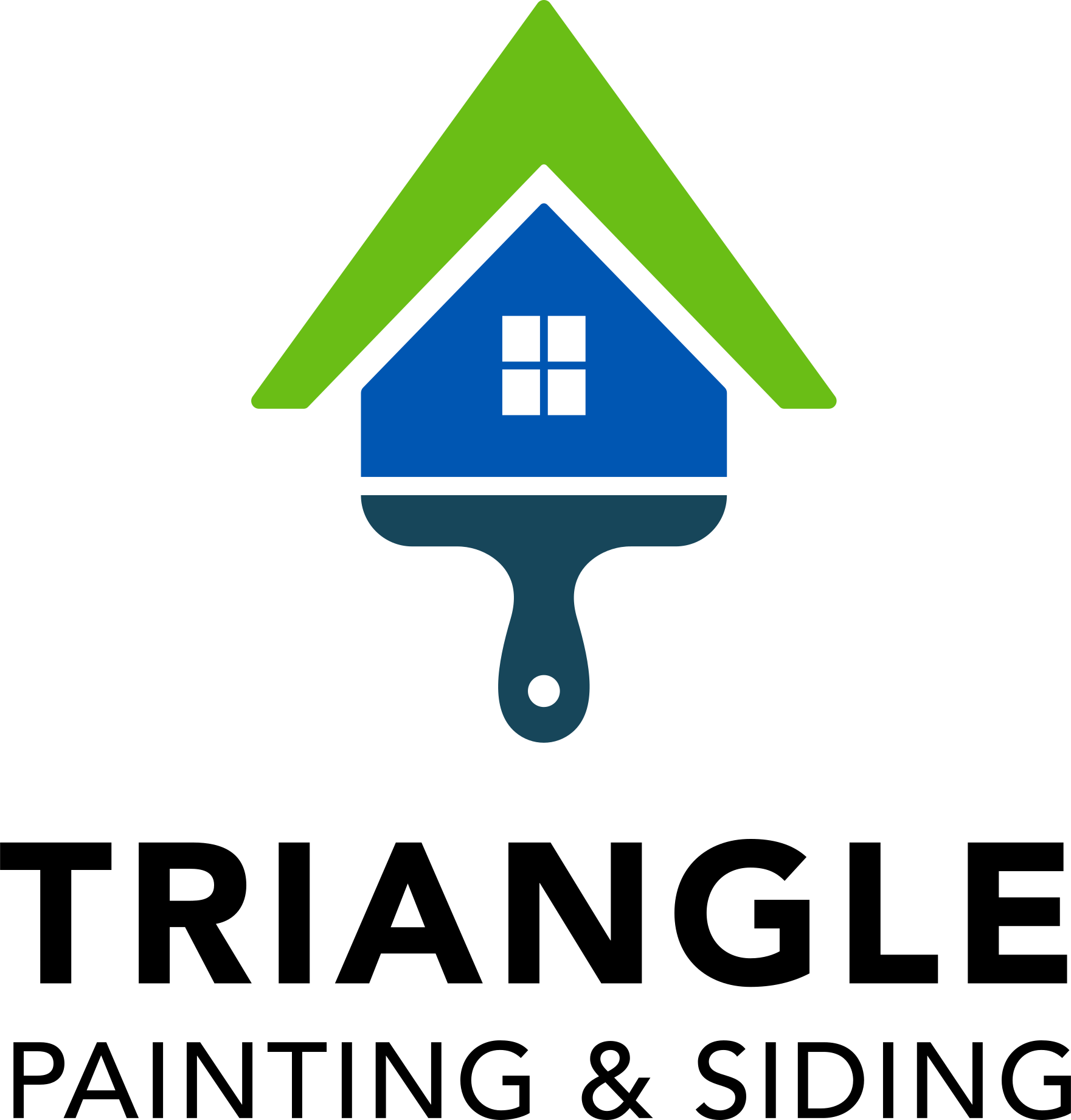Whether you’re transitioning your entire home from beige to gray or trying to add a bit of color to your space, it’s always helpful to have an estimate for how much your project is likely to cost. The cost to repaint the interior walls of an average-sized home is about $1,200 to $6,500, although that cost can vary significantly based on the size and scope of work. Read on to better understand the factors at play.
How Much Do Painters Charge?
 When professional painters estimate the cost of a job, they typically consider two main factors: labor and materials. Labor expenses often make up a significant portion of the total cost, typically ranging from 80% to 85% of the overall price of a paint job. By understanding how a painter calculates their labor rate, you can gain valuable insight into how to better estimate the total cost of your project.
When professional painters estimate the cost of a job, they typically consider two main factors: labor and materials. Labor expenses often make up a significant portion of the total cost, typically ranging from 80% to 85% of the overall price of a paint job. By understanding how a painter calculates their labor rate, you can gain valuable insight into how to better estimate the total cost of your project.
Cost Per Square Foot
The most common method of pricing for a paint job is based on the square footage of wall space that needs to be painted. Interior painting jobs typically range from $2 to $6 per square foot, with the cost covering two coats of paint. However, if you want to have window and door trims, moldings, or doors painted, the price may go up slightly.
If you’re considering painting millwork, such as cabinetry or built-in furniture, expect to pay more. For example, kitchen cabinets usually cost between $50 to $100 per door or drawer face.
For exterior jobs, the price range is generally between $3 to $6 per square foot for a new paint job that includes gutters, windows, trim, and any shutters or other decorative elements. Typically, a painter will estimate the total square footage of the area in advance and provide a flat rate quote for the job.
Calculating the Square Footage
To get an idea of the potential cost of your paint job, you can calculate the square footage of your home or room yourself. For exterior jobs, measure the perimeter of your house and multiply it by the height from the top of the foundation to the bottom of the roofline.
Likewise, for interior jobs, measure the perimeter of the room and multiply it by the height of the room. To get more accurate measurements, subtract the area for doors and windows from your calculations. This will give you a better idea of the total square footage that needs to be painted and help you estimate the cost of the project more accurately.
Per Room
Occasionally, professional painters may charge a flat rate per room, although this is less common. As a general guideline, you can expect to pay around $800 to $1,200 to fully repaint a bedroom, and $1,000 to $3,000 for a large living room or other spacious living area. These rates typically cover the repainting of walls, trim, doors, and ceilings.
If you choose to repaint only the walls, you may be able to save between 30% to 40% on the total cost. However, it’s important to note that this estimate may vary based on the specific size and scope of your project, as well as the rates charged by your chosen painter.
Per Hour
Although less common, some painters may charge based on their hourly labor costs. Typically, the average hourly rate for a professional painter ranges from $20 to $50 for basic painting jobs. However, for specialty work such as murals or unique paint applications, hourly rates can increase to $100 per hour or more.
On average, a skilled painter can cover anywhere from 150 to 350 square feet of paintable area per hour. You can use your calculated square footage to estimate how long a painter will need to complete your job. It’s important to account for both coats of paint and factor in time for prep work and clean up.
By understanding the various ways painters calculate their rates, you can make a more informed estimate of the total cost of your painting project.
Per Day
While it’s the least common method, some professional painters may charge based on a day rate. If you receive a day rate quote, expect to pay around $200 to $500 per day. However, it’s important to keep in mind that several factors can affect the duration of a project, even something as seemingly small as a rainy day. Therefore, it’s important to be aware that your project may take longer than initially anticipated.
Other Cost Factors
While labor costs make up the bulk of professional painting expenses, the remaining 15% to 20% is attributed to materials, including the paint itself. However, there may be additional costs to consider if your home requires lead paint testing or extra prep and repair work.
Paint & Material Costs
The cost of paint is typically the second largest expense after labor, accounting for 15% to 20% of the overall cost of a professional painting job. A gallon of interior paint usually costs between $25 and $50, while exterior paint costs around 25% more per gallon. Professional painters can usually buy paint at wholesale prices, which can save you money. One gallon of paint will cover approximately 350 to 400 square feet of surface area, which can help you estimate the amount of paint you need for your project.
Using high-quality paint will help you get the best results and longevity from your painting project. The cost of paint can vary depending on the type and finish. There are two main types of paint: water-based and oil-based. Water-based paint is easy to apply and clean up, but it has a less shiny appearance than oil-based paint. Enamel paint is very durable and easy to clean, but it requires more skill to apply, making it ideal for use in kitchens.
When choosing the finish of the paint, a good rule of thumb is that the higher the gloss, the higher the cost, but also the more durable the finish will be. Walls are usually painted in a matte, eggshell, or satin finish, while millwork elements like trim, cabinets, and doors are painted in a semi-gloss or high gloss finish. The higher the likelihood of an object being bumped, the higher the gloss you should use to ensure a long-lasting finish.
Whether or not you need to prime your surfaces before painting depends on the condition of the surface and the color you’re painting over. If you’re painting a similar color over a pre-painted surface and using a 2-in-1 paint with primer, a good cleaning and light sanding may be sufficient. However, if you’re painting over a darker wall or an unpainted surface like new drywall, you’ll need to use regular primer.
Other materials involved in painting include drop cloths, tape, brushes, rollers, and spackle or caulking for wall prep. A professional painter will have all these items already, but if you’re DIY painting, expect to spend $50 to $200 on additional materials.
Lead Paint Testing & Remediation
If your home was built before 1978, it may be necessary to test for lead paint. This usually costs around $300. If lead paint is found, a licensed professional will need to either remove it or encase it to meet regulations.
Lead paint removal usually costs around $13 per square foot and is a time-consuming process, so it’s important to factor it into your budget early on. If encasing the paint is an option, such as with exterior siding, you can expect to pay around $4 per square foot for the work.
Prep Work
Professional painting quotes usually include basic prep work, such as light sanding and cleaning, but additional repairs may increase the costs. To minimize prep hours and save money, it’s essential to prepare not just your surfaces but also your space. Clearing spaces in advance will save time and money, although professional painting teams will move furniture for you.
It’s usually cheaper to paint a space before moving in or after moving out because there are fewer surfaces to cover and protect. Some preparation work, such as removing popcorn ceilings or cleaning moldy or mildew-stained drywall, is best left to professionals. Be sure to inform your painter of any extensive repairs or remediations ahead of time so they can account for them in their estimates.
Speciality Painting
Specialty painting and commissioning murals or trompe l’oeil can be an additional cost to consider. Decorative painting such as metallic or textured paint, two-toned designs, and other similar techniques are often included in a professional painter’s services. However, for more intricate projects like a mural, it may require the skills of a specialized painter or artist, which can cost around $150 per square foot depending on their level of expertise.
Tips For Hiring a Professional Painter
When you want to hire a professional painter, it’s a good idea to start by asking friends or neighbors for recommendations. You can also look online to find reviews and ratings of local painters.
Once you have a few bids (we suggest at least three), compare the costs. It’s important to understand the cost breakdown between labor and materials. If this isn’t clear in the bid, ask for a more detailed breakdown. Be sure to get a written contract, even if it’s a simple one.
When hiring a painter, ask questions to understand what you’re paying for and whether they are a good fit. Some good questions to ask include:
- Do you have general liability or professional liability insurance?
- Are you licensed and insured?
- Do you do the painting yourself or use subcontractors?
- Do you guarantee your work?
It’s crucial to make sure the professional you hire is insured and offers a guarantee. You can also ask for contact information for references or to see a portfolio of their previous work to get an idea of their quality.
Decide on a payment plan before the work begins. It’s common to pay a downpayment of one-third of the quoted cost. Some painters may not require any down payment and will ask for payment in full once the work is complete. Never pay a painter in full before any work has started.
Alternatives to a Professional Painter
If you’re looking to save money on painting and don’t need a high-quality finish, hiring a handyman for as little as $200 flat or $25 an hour might seem like a good option, but proceed with caution. As long as you don’t need the paint job to be done correctly or professionally, then this is an option to consider.
Another alternative is hiring student painters who are cheaper than professionals but will definitely not deliver the same quality without proper supervision, if they show up at all.
Last, but not least, you can choose to do the job yourself, but it may take significantly longer and may not result in a high-end finish. It’s important to remember that while going with a licensed professional is a more expensive option, it’s the best choice for a high-quality end result.
Triangle Painting & Siding Is Here To Help
If you would like some professional help with your painting project, Triangle Painting & Siding is here to help. Simply contact us today to get your free quote. We proudly service the entire Research Triangle area, including Raleigh, Cary, Garner, Apex, Wake Forest, Clayton, Holly Springs, Fuquay-Varina, Knightdale, Morrisville, Durham and Chapel Hill, NC.









